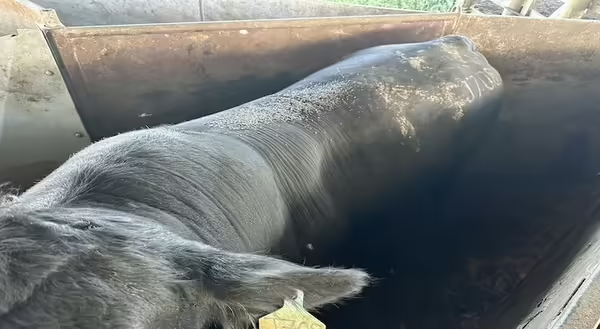
As June begins, flies are ready to bother cattle all summer long. It is important to plan an effective fly control system to limit the chances of reduced grazing time, spread of disease, and increased stress. Observing herds and combining different prevention methods can save up to $1 billion in overall revenue of the beef cattle industry. This money loss can come from a variety of sources such as declines in feed intake, causing loss of profit due to lower market weights. The spread of pinkeye by flies, where calves are more susceptible, is also responsible for money loss due to costs of treatment.
How flies threaten cattle and producers?
Cattle are often seen switching their tails to knock flies off themselves, but larger issues can arise due to this continual annoyance. Since cattle spend time and energy swatting off flies, grazing time reduces, causing a decrease in daily gain which leads to a lower performance. Flies and heat during summer combine to build up significant stress levels. Cattle become more susceptible to weight loss, injuries, and disease. Instances of fly pressure cause cattle to move into water, such as ponds or streams, to reduce surface area for flies to target. This pressure leaves cattle grouped close together in water leading to more health issues such as foot rot, pinkeye, and heat stress.
Most concerning types of flies
Face flies:
- Rather than biting, they feed on secretions around eyes, nose, and mouth area, hence the name “face” flies
- Main cause of pinkeye, especially in calves
- Eggs are laid in fresh manure with a lifespan of around 21 days
Horn flies:
- Draw blood from back, shoulder, and belly area
- Eggs are laid in fresh manure with a lifespan of 10-20 days
Stable flies:
- Painful bites to be able to feed on blood from front legs
- Found in decaying matter with high moisture levels such as silage, manure, bedding, or degrading grass in pastures
- Lifespan of 14-24 days
Control options
- Fly tags: move insecticide from tags to coat. Important to rotate tags with different active ingredients to reduce development of resistance
- Pour-ons: poured directly on the back of cattle. Pay attention to proper dosage and timespan of how long it lasts.
- Feed additives: similar to oral larvicides and insect growth inhibitors, additives work from the inside out to keep larvae under control. While this is effective for new growth, keep in mind adult flies that move to new herds.
- Oiler or dust bag: rubbers filled with fly control oils or bags filled with insecticidal dust. Make sure to regularly check rubbers and bags for refills and repairs.
- Direct spray: insecticide directly sprayed onto back, legs, or belly. Very effective, but labor intensive.
Reminders
A common issue with fly control is resistance. Make sure to rotate options since multiple prevention strategies may be necessary or introduce a method later in the summer when the number of flies on cattle reaches 50-100 per side. It is also important to keep a close eye on calves since they are more susceptible to diseases such as pinkeye due to underdeveloped immune systems.
Payton Block is a student at the University of Illinois Urbana-Champaign who works in beef production, research, and producer outreach as a University of Illinois Extension intern in the I-BELIEF program through the Department of Animal Sciences in the College of Agricultural, Consumer and Environmental Sciences. This article has been reviewed by Extension Commercial Agriculture Educator, Travis Meteer.